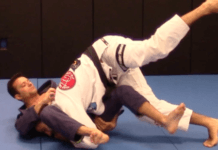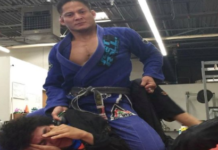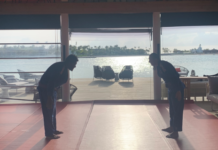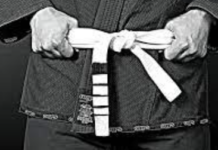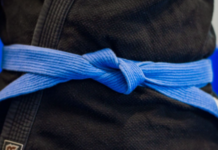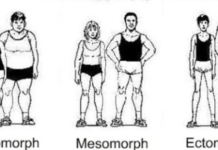For everyone that wants to know more about Brazilian Jiu Jitsu belts, look no further. Read our Complete guide for BJJ belt System.
All you need to know about BJJ belt System
History of Brazilian Jiu jitsu Belts
The BJJ belts in order are White, Blue, Purple, Brown, and Black. The colors of the belts we know today have their origins from Judo. The founder of it Jigoro Kano developed a simple belt system consisting of white, brown and black belts in 1882 at his Kodokan martial arts school. His motive behind the development of such a system was to be able to visually track his students’ progress. It didn’t take long for other martial arts to adopt this system and it soon became the norm.
In BJJ, we owe the belt system to Helio and Carlos Gracie. They developed the original Gracie jiu-jitsu belt system in 1952. It was based more on instructorship, rather than martial arts skill. Students who did not take instructor courses wore white belts. Students who did obtain instructor diplomas were given light blue belts. After becoming professors, students would be given dark blue belts. Black belts did not exist at this time. In Gracie Jiu-Jitsu black belts were introduced in 1967.
In the same year, the Jiu-Jitsu Federation of Guanabara created the first official belt ranking system. The Sport Jiu-Jitsu International Federation (SJJIF) and International Brazilian Jiu-Jitsu Federation implemented much of the current criteria and modern belt ranks.
What are the colors in BJJ belt System?
In BJJ, the belt system is much more restrictive than in other martial arts. It often takes over 10 years to get a black belt. Each belt color has its special characteristics that determine its owner skill level and approach to BJJ. Below is a description of each belt.
White belt
A white belt is the first one. It all starts with it. The main goal while having it is to acquire basic knowledge on which all our future skills will be based. This is a very cognitive stage of learning. We spend most of our time and energy thinking about what we can do and learning how to move properly. At this stage, we need our coach to tell us what to do and how to do it properly.
The white belt is one of the most difficult stages in our BJJ adventure. You will spend most of your time tapping and being dominated by more experienced partners. It is said for a reason that the white belt is all about survival. There will often be moments of frustration and doubt as to whether what you are doing makes sense at all. Consolation can be found in the fact that it is completely natural at this level of science, and almost everyone goes through it. This is the stage that each of us simply has to go through. Every colored belt, every world champion once had a white belt.
Despite the great frustration associated with being completely beginner, this is also the stage where you will see the greatest development. Each of the training will cause your development and add details that will make your game more complete.
Blue belt
Having a BJJ blue belt means that you are already beginning to understand what is happening around you. At this stage, you already know how to defend and attack. In your arsenal, you have at least one ending technique from every possible position. You also know how to get away from most of the basic threat positions. However, this is also the stage where you still face fundamental mistakes. As a blue belt, you are “consciously incompetent.” You are starting to see what you can improve, what techniques are missing, etc. You see your own mistakes, but you also know what to ask the trainer or more experienced colleagues.
Your game as the blue belt is still incoherent. You’ve got better and worse days on the mat. This inequality can be a reason of great frustration. It is on this belt color that most people leave BJJ. That’s why the most important thing is just not to give up. Dealing with emotional ups and downs in BJJ is an integral part of the learning process.
Purple belt
The purple belt means smoothness. It’s a game of catch and control. This is the stage when you already know how to handle your weight in the right way. As a purple belt, you will begin to perform complex actions. You can also use your opponent’s mistakes. You know how to use his speed and weight to his disadvantage. In addition, on this stage, you know how to eliminate unnecessary movements and bad behaviors that have hampered your development so far.
The purple belt is a time of correcting things that we know we are not the best. It is also a time of decisions. We already know all types of guards, etc., so it’s time to choose a specialization. When it comes to mentality – as a purple belt – you will be consciously competent knowing what and when to do. Purple belts can recognize the right conditions in which a technique should be used.
In addition, you will work more on your own, as you already have much more knowledge than as a white or blue belt. You will rely less on your trainer when it comes to answering questions. Your relationship with the coach will be based more on solving problems and exchanging ideas than on his monologue given to you. Unfortunately, the benefits you will get from any fight or sparring will be much smaller than those achieved as a white or blue belt.
Brown belt
The last belt before black, which means that few positions or moves should be unknown to you at this level. It’s time to behave dominantly on the mat, but at the same time, you should be ready to teach others. What’s more on this level, you’ll already have some moves in which you are really good and for which you will be known.
As a brown belt, you’ll be carrying out complex attacks. Fluency and efficiency will be the foundation of your skills. At the brown belt stage, your learning will be based mainly on watching new techniques. The brown belt is unknowingly competent. At this stage, the movements are already automated and smooth. The brown belt can enforce techniques automatically and immediately. Brown belt focuses on counterattacks, continuity of movements or crossings. At this level, you can easily adapt and respond to changing conditions in a fight. The danger at this stage is overconfidence and “I already know this technique, so I don’t have to train it” attitude.
Black belt
After years of studying and training, a black belt it’s the ultimate goal for all martial arts. The black belt is a true BJJ champion. As a black belt, you should have control over your body, your movements, and most importantly – your ego. Your movements will be close to perfection and you are an inspiration for others. Your understanding of Brazilian Jiu-Jitsu is deep, precise and fully technical. At this level, you should create and develop your techniques and attacks. In addition, attack and defense are instinctive for you.
It can be said that black belts Brazilian Jiu-Jitsu is full of grace, fluency in attacks and escapes, instinctive transitions, and the ability to solve problems. Black belts also know that everyone needs to go back to the white belt stage and constantly learn new things. Only thanks to this attitude you can break your bad habits and create new, more effective ones.
What’s more?
After black belt, you can gain Red / Black belt, Red / White belt (commonly known as a coral belt) or even Red belt. These belts are reserved for very experienced practitioners, most of who have made a large impact on Brazilian jiu-jitsu, and are often addressed within the art by the title master (for coral belts) or grandmaster (for red belts). According to Renzo and Royler Gracie, in Brazilian jiu-jitsu, the red belt is reserved “for those whose influence and fame takes them to the pinnacle of art”. These belts are just the rulers of the realm.
Brazilian jiu-jitsu belts superstition and traditions
Should you wash your BJJ belt?
In BJJ and many other martial arts, there is a widely known superstition that washing the belt will lead to washing away knowledge. According to legend white belts will turn into the black from years of training. First, it will be yellow from sweat, green from grass stains, brown from training in the dirt. Then over time, eventually it will become black. The belt also symbolizes our hard work, blood, sweat, and tears. Out of respect for it, therefore, we should not wash it.
Unfortunately, there are some concerns about not washing the belt. The obvious ones are hygienic. Not washing the belt can cause a build-up of dirt, bacteria, and other harmful things. There is no scientific evidence that washing the belt will lead to washing away knowledge, so please just do it. If you are still afraid of this superstition you don’t have to wash it after every training, but it will be good to do it from time to time.
Promotion ceremony traditions
One of the promotion ceremony traditions in Brazilian jiu-jitsu is the gauntlet celebration, “CorredorPolonês” (Polish Corridor in Portuguese) or belt whipping line. These are just different names of the same thing. Regardless of the name, it is a traditional ritual after belt promotion, in which fellow team members use their belt to whip a promoted person. Students create a corridor, positioning themselves on each side of the mat. The promoted person walks slowly through the gauntlet while their teammates use their belts to “whip” them on the back. The origin of this tradition does not appear to have originated from Brazil. The American Chris Haueter, claims to have created the gauntlet line in the early 1990s. As a member of the Machado Jiu-Jitsu Academy in the late 1980s/1990s, he was coming out of the army and adapted some of the military hazing cultures into the academy. Then the tradition just spread as BJJ grew.
How to choose and tie a BJJ belt?
The most popular choices are a plain belt or ones with some patches. It is also worth paying attention to the thickness of the belt. The stiffer belts will last longer, they will not break so easily and tied up will look good in the pictures. Thinner ones, on the other hand, are easier to tie, and they add a veteran vibe to us 😉
Whether you choose a thin or thick belt is not as important as its length. Below are approximate values on how to choose the right length belt. Check out the best Brazilian Jiu Jitsu belts to buy.
| Waist length | Waist circumference |
| 220cm | Around 55cm |
| 240cm | 50-65cm |
| 260cm | 60-75cm |
| 280cm | 70-95cm |
| 300cm | 90-105cm |
| 320cm | 100-120cm |
When it comes to tying the belt, there are several ways to do it. More about this in the video below.




